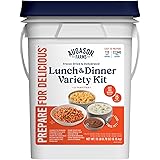Preparedness for Emergencies
Understanding the Nature of Risks
In my journey to become better prepared, I’ve learned that emergencies can strike at any time. Whether it’s a fire, flood, or even a home invasion, the possibility of needing a quick escape is very real. Each location and situation comes with its own set of risks, and recognizing these can help you better plan for them.
It’s essential to consider not just one exit route but multiple escape options. Having several routes mapped out can make the difference during a crisis. If the front door is blocked, knowing another way out is crucial. I often practice with my family which routes to take in various scenarios; it’s amazing how much more at ease we feel after those drills.
The peace of mind that comes with being prepared is invaluable. Breaking the routine thinking lets us appreciate the fact that sometimes, things go wrong, and we need to adapt quickly. Keeping this in mind encourages everyone, especially kids, to think critically and act swiftly in real-life scenarios.
Building a Comprehensive Plan
Evaluating Your Space
When I first set out to create a comprehensive escape plan, I started by thoroughly evaluating my home. I looked at each room, identified the main exits, and sought alternative routes. This process made me keenly aware of the significance of every window and door!
During this evaluation, I also discovered some potential hazards that I had overlooked. For example, furniture could impede an emergency escape if it isn’t positioned wisely. This reassessment prompted me to rearrange and declutter certain areas, which was a win-win for both safety and aesthetics!
It’s all about creativity and foresight—imagining every possible outcome helps. If you can visualize different scenarios, it becomes easier to devise multiple escape routes that others might miss, contributing to a more robust action plan!
Practicing Your Escape Routes
Conducting Drills
Getting everyone involved in practice drills is a crucial part of the equation. The first time I organized a drill, my family thought I was being overly dramatic. However, when the smoke alarm went off during one of our practice runs, they started to understand the importance of knowing how to react quickly.
We set clear roles and responsibilities; each family member knew where to go and when. Simulating real-world scenarios helps everyone stay calm under pressure and reinforces the idea that preparation can and does save lives.
== > What if ... Get a FREE Subscription to PREPARE
Don’t forget to turn this into a fun experience! Games or challenges during drills can keep everyone engaged and excited about participating. The more fun it is, the more likely your family is to remember what to do should a real emergency arise.
Adapting to Various Environments
Home vs. Public Spaces
While planning for home is one thing, adapting those skills to public spaces is equally important. Each building or location comes with its own layout, and knowing how to navigate them under duress is vital. I make it a habit to scope out exits whenever I visit new places, be it a restaurant or a shopping mall.
Get Preparedness and Self-Reliance Tips. Subscribe Now!
It’s also essential to teach families and friends about the differences in various environments. Public spaces can be bustling and chaotic, and people can get disoriented. Discussing these differences can help others prepare mentally, which is just as fundamental as the physical preparation.
Engaging in conversations about escape routes while you’re out can create awareness and a culture of preparedness, gradually making it a norm rather than an afterthought. Trust me; getting everyone on the same page is half the battle won!
Learning and Improving
After-Action Reviews
Once you have conducted drills or explored escape routes, you must take time to evaluate how things went. After-action reviews can be an outstanding way to improve your plan. My family sits down together to discuss what worked and what didn’t.
This isn’t about finger-pointing; it’s about learning as a team—the outcomes often inspire changes that we wouldn’t have thought of otherwise. It’s fascinating to hear different perspectives that can enhance our preparedness.
Over time, adapting our methods based on previous experiences has made us sharper and more agile. The best part is that ongoing evaluations create an environment of continuous improvement, which is perfect for honing our skills and keeping the plan fresh in our minds!
FAQs
1. Why is it important to have multiple escape routes?
Having multiple escape routes ensures that you have options in an emergency. If one route becomes blocked or unsafe, another can be your lifeline.
2. How often should I practice my escape routes?
I recommend practicing at least twice a year. Regular drills keep everyone familiar with the routes and ensure that plans are still relevant.
3. What should I include in my escape plan?
Your escape plan should include designated exits, roles for family members, and a meeting point outside the home. Keeping it visible and easy to access is also key.
4. Can public spaces have escape routes as well?
Absolutely! Always take note of exits when in public spaces. Knowing where to go in unfamiliar settings can save precious time in an emergency.
5. How can I make escape drills fun for my family?
Turn drills into a game! Create challenges or time them to see how quickly everyone can follow the plan. The more engaging it is, the better the learning experience!






